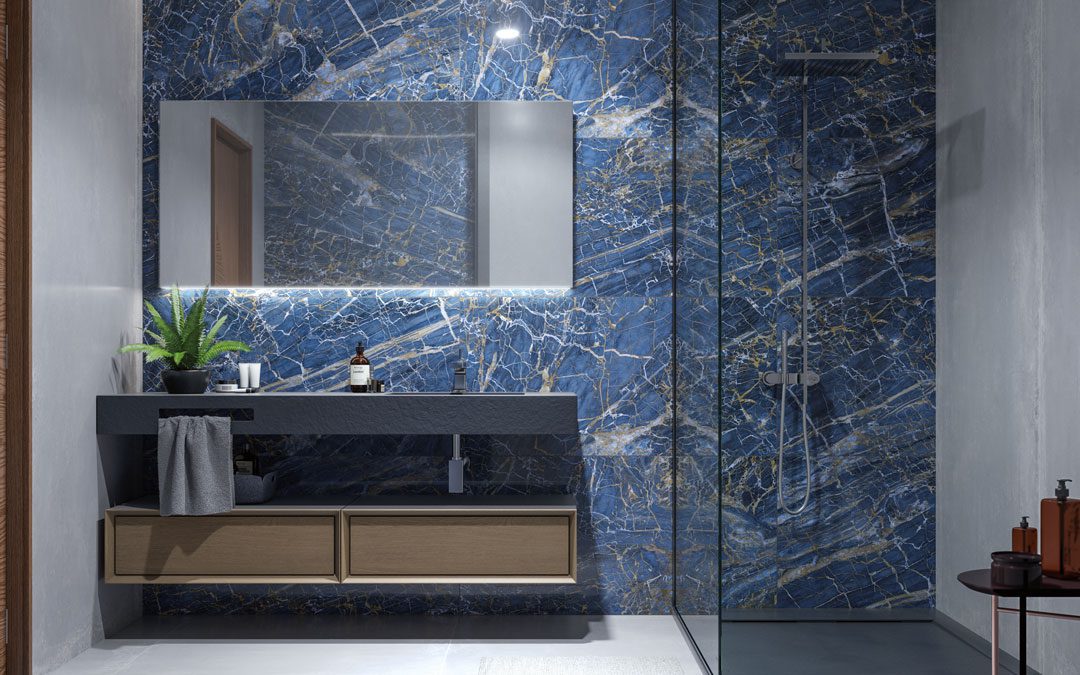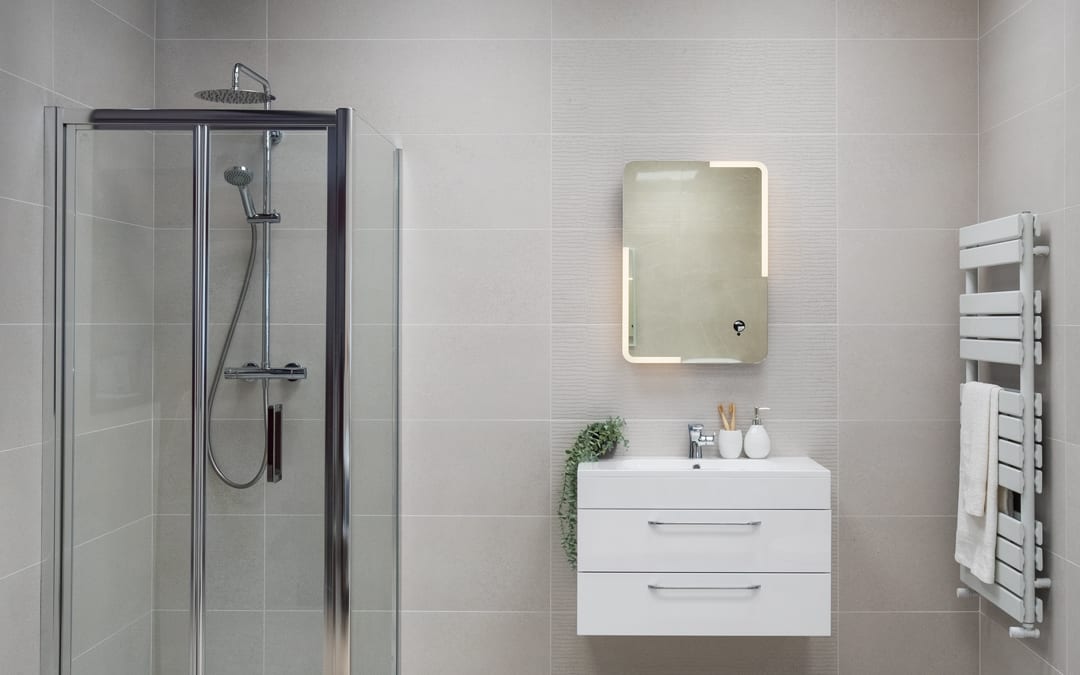As demand for heated floors hots up for both new builds and renovations, we weigh in on the pros and cons of electric vs wet underfloor heating systems.
The many positives to underfloor heating mean that they’re becoming an increasingly popular choice among home owners and businesses. Lower running costs and energy savings are among the benefits, and designers and architects love it because it gives more design freedom in a space without having to worry about where the radiator must go. The beauty of underfloor heating – as opposed to central heating systems – is that it satisfies the three Es:
- Economical: Heated floors provide an average saving of 15% on heating bills, thanks to the efficient way this system warms a home.
- Energy efficient: Underfloor heating takes less time to warm a room, and provides the same level of comfort at a lower temperature than radiators.
- Even heat distribution: Underfloor heating warms the entire floor space in a room so you don’t get those hot spots near the radiator and cold spots in the middle of the room.
Electric underfloor heating vs a wet system
There are two types of underfloor heating systems:
- Electric underfloor heating is plugged in to the building’s electrical supply and is a grid of fine electrical wires on a thin mat that is rolled out onto the floor substrate.
- Wet underfloor heating is a system of pipes that circulates warm water heated by the boiler or heat pump.
Ease of installation is the main departure point: wet systems are more complicated to retro-fit, so are best for new builds. Electric floors can be installed any time you’re laying or replacing a floor, so are a sound choice for both new builds and renovations.
A wet system has a manifold, which is the hub where the supply and return pipes carrying the water meet to keep it warm. By comparison, an electric system is simply connected to the existing electrical circuit via a thermostat.
An electrical system heats quickly, so is ideal when you want warmth in a short space of time, making it perfect for bathrooms and kitchens.
Underfloor heating can raise the floor level and wet systems do this by a few centimetres. World of Tiles stocks the Warmup electric underfloor heating system, which has extremely thin cabling attached to mesh mats that don’t raise the level of the floor significantly.
Floor types compatible with underfloor heating
Underfloor heating works with virtually any floor material (except perhaps cork and rubber) so can be installed under tile, wood flooring, laminate and even LVT. However, the basic scientific laws of heat conduction apply: the harder the surface, the better it conducts thermal heat.
Concrete, stone and tiles
As tiles become more popular in living rooms and bedrooms, thanks to exciting designs such as wood-look and concrete-effect tiles, heated flooring is an anti-dote to cold feet. These hard materials heat up quickly and retain the warmth longer than other floor surfaces. Warmup’s electric underfloor heating system is specifically designed so you can lay tiles directly onto it, without the need for a barrier layer between the two. It comes on a roll in various widths and lengths, and self-adhesive tape makes it really easy to install.
Laminates, carpet and vinyl
For timber flooring, the Warmup Foil Heater System takes the same principles and uses them in an electric underfloor heating system for floor surfaces that are not optimal heat conductors, such as carpets, laminate, wood and vinyl, to deliver consistent and even heat distribution. It can also be installed in wet areas, such as bathrooms, without the need for extra earthing.
Electric underfloor heating controls
Smart technology has made controlling the temperature in spaces more precise and easier to do, even from a distance. The Warmup app-controlled 4ie Wifi model remembers how and when you use your heating, and calculates the most efficient settings for your consumption, and you can control the heating from your phone.
World of Tiles is the exclusive supplier of Warmup underfloor heating products in Ireland. We have partnered with a number of architects and developers to provide tiles and wood flooring suitable for underfloor heating. See Clog Na Léinn, our project for NJ Doyne Construction.


